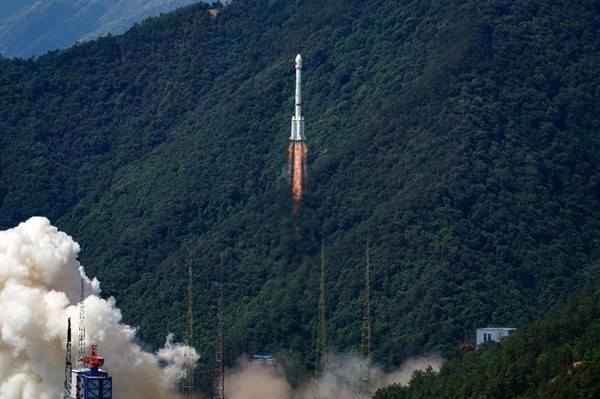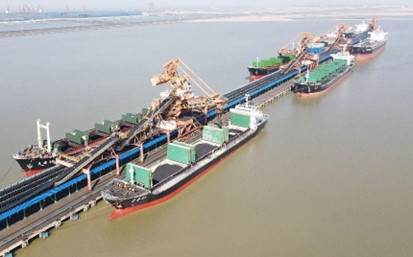By Sun Yahui
China's BeiDou Navigation Satellite System (BDS) is now applied in a wide scope of areas, from navigation to transportation, and from agriculture, forestry, animal husbandry and fishery to disaster prevention and alleviation.
The Chinese navigation system provides reliable positioning services and ensures smooth operation of various sectors.
According to statistics, the total number of terminal products with BDS positioning function has so far exceeded 1.2 billion units or sets in China, and the BDS has served more than 7.9 million operating vehicles, 47,000 ships, and 40,000 postal and express delivery vehicles on main lines. Meanwhile, there are more than 5 million shared bikes equipped with BDS high-precision positioning chips.

Since 2020 when the last satellite of the BDS was completed and launched, it has played an important role in enabling economic and social development.
The total output value of China's satellite navigation and positioning service industry reached 500.7 billion yuan ($71.3 billion) in 2022, said a white paper recently issued by the Global Navigation Satellite System and Location Based Service (GNSS & LBS) Association of China.

In particular, the output value of core sectors, including integrated circuits, components, algorithm, software, navigation data, terminals and infrastructure, which are directly related to the development and application of satellite navigation technologies, hit 152.7 billion yuan, accounting for 30.5 percent of the total.
Today, the BDS has become a part of people's everyday life.
Map apps Baidu Map and Amap have announced to switch to prioritize BDS positioning. The positioning service of the BDS the two apps call now average more than 360 billion times per day.

Thanks to the high-precision positioning of the BDS, it's now possible to obtain centimeter-level and real-time positioning information of vehicles.
Xie Jianjia, deputy president of WeTransport, a new strategy on smart transportation launched by China's internet giant Tencent, noted that the BDS is widely applied in the transportation sector. It offers precise and reliable positioning and navigation services for vehicles in terms of autopilot, automatic parking and automatic logistics, which helps improve safety and efficiency, he added.
The BDS is also powering the development of China's infrastructure and has significantly improved high-precision positioning services for natural resource, agriculture, communication, transportation and electricity industries.
For instance, a geological hazard monitoring and early warning system based on the BDS is now in service in over 10 Chinese provinces including Yunnan and Sichuan. The system, which is able to remotely monitor, analyze and warn deformations, cracks and underground water level in real time at sites prone to disasters, has improved these provinces' capability in disaster warning.
Besides, the application of the BDS is also vigorously promoted in the power industry. As of the end of 2022, over 2,000 BDS ground-based augmentation stations had been built and planned across China by power constructors. More than 500,000 units or sets of BDS terminal devices had been put into use, offering high-precision positioning services for drone inspections, robotic inspections at transformer substations as well as tower monitoring and inspections. So far, all vehicles in the power industry have been equipped with BDS terminals.
Regions in China are promoting in-depth integration between the BDS and local economy according to their own demands to pursue economic transformation and upgrading.
In the Beijing-Tianjin-Hebei region, the navigation system has been used to guide infrastructure-vehicle cooperative autonomous driving and unmanned delivery, which effectively improves the efficiency of traffic and terminal-end deliveries.
The Guangdong-Hong Kong-Macao Greater Bay Area, to realize intelligent development of infrastructure, has applied BDS technologies in multiple engineering projects, including an offshore wind farm in Guangdong's Yangjiang and a bridge in the province's Zhanjiang. The comprehensive construction efficiency of these projects has been significantly improved thanks to these technologies.
In the Yangtze River delta, the application of the BDS has made possible cross-district operation of bus services, which advances integrated regional development and fosters new areas of growth for the region.
Experts believe that as China accelerates industrial digitalization, the BDS also needs to deeply integrate itself with industries to forge new production models, on top of offering time and spatial information, which is expected to create broader space for the market-oriented, industrialized and large-scale development of the BDS.ㅌ

